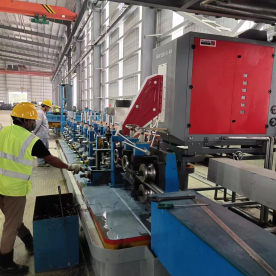****
In the realm of manufacturing, annealing machines play a crucial role in ensuring metal products have the desired mechanical properties. As these machines undergo frequent use, the wear and tear on their components can lead to decreased efficiency and increased production costs. In turn, sourcing spare parts for annealing machines becomes essential for maintaining optimal performance. However, with the rising costs of materials and parts, manufacturers are on the lookout for cost-effective solutions that do not compromise quality. This article explores cost-effective annealing machine spare parts and their significance in enhancing productivity while minimizing downtime.
Understanding the Importance of Annealing Machine Spare Parts

Discovering Cost-Effective Annealing Machine Spare Parts: Maximizing Efficiency and Longevity in Manufacturing Processes
Annealing processes involve heating materials to specific temperatures and subsequently cooling them down to relieve stress, improve ductility, and correct metallurgical properties. This process is pivotal across various industries, including automotive, aerospace, and electronics. Since annealing machines are heavily relied upon, the failure of even a single part can lead to significant delays, reduced output, and increased operational costs.

Discovering Cost-Effective Annealing Machine Spare Parts: Maximizing Efficiency and Longevity in Manufacturing Processes
Spare parts for annealing machines can encompass a range of components, such as heating elements, thermocouples, control systems, conveyor belts, and insulation materials. Each of these parts plays a vital role in the overall functionality of the machine. When these components wear out, swift replacement ensures uninterrupted production, making it critical for manufacturers to have readily available, cost-effective solutions.
Cost-Effective Options for Spare Parts
1. **Aftermarket Parts**: One popular avenue for cost-saving is the use of aftermarket spare parts. These parts are manufactured by third-party suppliers rather than the original equipment manufacturer (OEM). Aftermarket parts can be considerably cheaper while often maintaining comparable quality and performance. However, it’s essential to conduct thorough research on suppliers to ensure compliance with industry standards.
2. **Refurbished Components**: Refurbished or remanufactured parts are another cost-effective option. These components have been reconditioned and tested to work as new. Utilizing refurbished parts can save substantial costs compared to purchasing brand-new components and contribute to more sustainable manufacturing by reducing waste.
3. **Customized Solutions**: For manufacturers with unique annealing machine designs, customized spare parts can be a cost-effective alternative. By working closely with specialized manufacturers to create tailored solutions, businesses can bolster their machinery’s efficiency while also saving on inventory costs associated with stock components.
4. **Bulk Purchasing**: Establishing contracts with suppliers for bulk purchasing can lead to significant discounts, further reducing costs per unit. Many suppliers offer price breaks when ordered in larger quantities, making this an advantageous strategy for companies with ongoing maintenance needs.
5. **Preferred Supplier Programs**: Many manufacturers benefit from establishing relationships with preferred vendors who understand their requirements. By committing to a particular supplier, businesses may gain loyalty discounts, priority service, and access to a more extensive catalog of cost-effective, high-quality spare parts.
Minimizing Downtime with Efficient Spare Parts Management

Discovering Cost-Effective Annealing Machine Spare Parts: Maximizing Efficiency and Longevity in Manufacturing Processes
Cost-effectiveness in spare parts acquisition is not solely about the price; it’s equally about minimizing downtime. A well-established inventory management system can ensure that essential spare parts are always on hand when required. Manufacturers should implement predictive maintenance strategies that help identify components likely to fail and address replacements proactively. By anticipating needs, companies can reduce the waiting time for parts and, in turn, minimize interruptions to production schedules.
Conclusion
In the competitive landscape of manufacturing, maintaining the performance of annealing machines through cost-effective spare parts is critical to optimizing operations and controlling costs. By exploring aftermarket options, refurbished components, and efficient supply strategies, businesses can significantly enhance their machines’ lifespan and productivity. As industries continue to evolve, embracing creative approaches to spare parts management not only drives operational efficiency but also underscores a commitment to innovation and sustainability in manufacturing practices. Manufacturers who prioritize cost-effective solutions will undoubtedly gain a competitive edge in a market that demands both quality and efficiency.High-Wear-Resistant Spare Parts for Tube Mills



